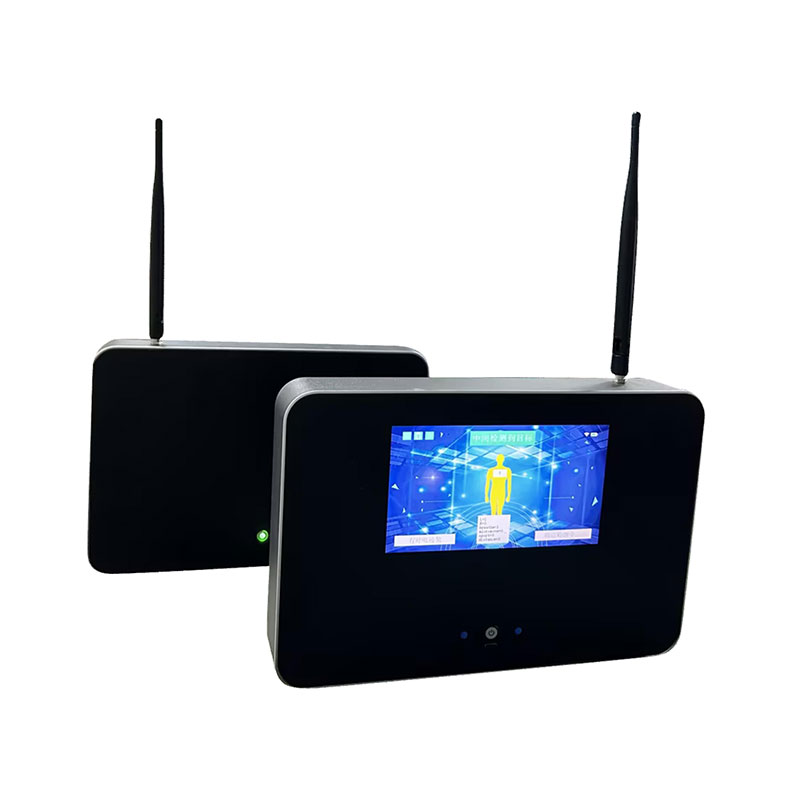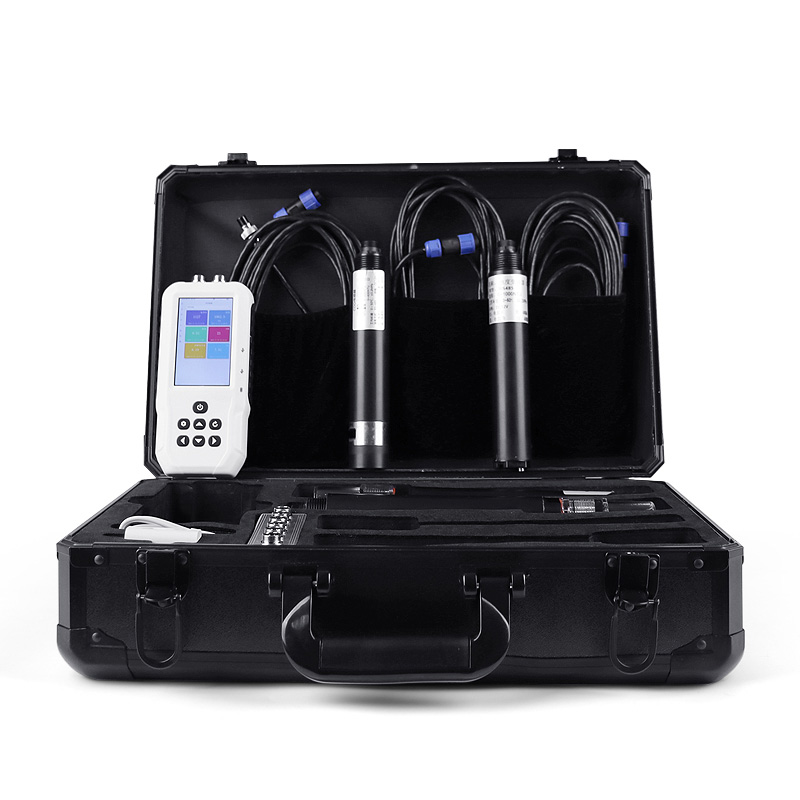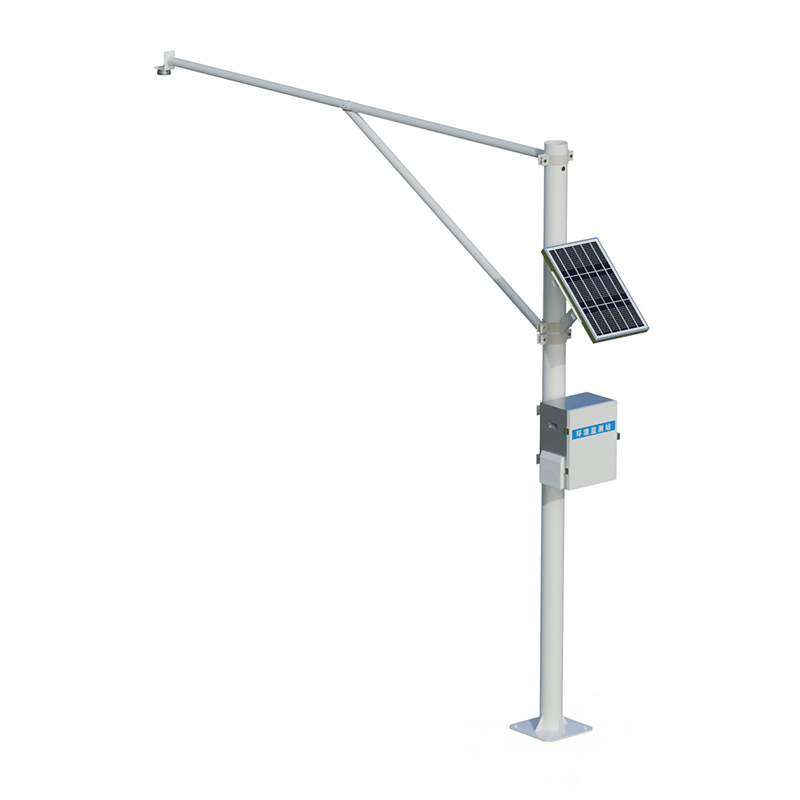Product Center
-
Hydrological equipment monitoring station
-
Water Quality Monitor Sensor
-
Plant protection equipment
-
Food Testing Equipment
- Rainfall Monitoring employs K-band radar for non-contact monitoring of rainfall and water level
- Wheat Fusarium Head Disease Monitoring System: A Wheat Disease Prediction Solution Based on Spore Capture and Built-in Model
- Water quality monitoring system: Integrated Water Quality Analysis Equipment for Monitoring Water Temperature, Conductivity, pH, and Dissolved Oxygen
- Soil Moisture Monitoring Simultaneously Monitors Moisture, Temperature, and Conductivity of Three Soil Profiles
- River flow and streamflow monitoring Integrated Water Level, Flow Velocity, Discharge, and Rainfall Monitoring
- Soil profile moisture meter can measure soil profile moisture, temperature, and electrical conductivity
Shandong Fengtu IOT Technology Co., Ltd
Sales Manager:Ms. Emily Wang
Tel, Whatsapp:+86 15898932201
Email:info@fengtutec.com
Add:No. 155 Optoelectronic Industry Accelerator, Gaoxin District, Weifang, Shandong, China

Water quality suspension sensor
Model:FT-S10
Brand:fengtu
Related products
Product details
1.Water quality suspension sensor application environment description
The Water quality suspension sensor is a device that measures the concentration of suspended matter in solution (sludge turbidity) using an optical measurement method.The concentration of suspended solids in water is measured by using the scattering or absorption characteristics of light. It has high sensitivity, fast response and real-time monitoring capabilities, and is widely used in water quality monitoring and sewage treatment.
Signal output: RS485 (MODBUS-RTU). Infrared LED light source, strong anti-interference ability.
Internal signal isolation technology, strong anti-interference.
Good reproducibility, thermal stability, low drift, small size, fast response
Easy and simple installation, 3/4NPT pipe thread, convenient for submerged installation or installation in pipes and tanks, stable performance and long service life
IP68 waterproof standard
2. Technical performance and specifications of water quality suspension sensor
1. Water quality suspension sensor technical parameters
| Measuring principle | Scattered light method |
| Signal method | RS485 (MODBUS-RTU) |
| Measuring range | 0~2000mg/L |
| Measurement resolution | 0.1mg/L |
| measurement accuracy | ±5% (depending on sludge homogeneity) |
| shell material | Glass and ABS |
| cable length | Standard 5 meters |
| Supply voltage | 12-24VDC (0.4W@12V) |
| Calibration method | Two-point calibration |
| Measurement environment | Temperature 0~50℃ (no freezing), < 0.2MPa |
| waterproof level | IP68 |
| Installation | Immersion installation, NPT3/4 thread |
2. Water quality suspension sensor dimensions

The sensor connector is an M12 aviation plug connector with 5 pins.
3. Water quality suspension sensor installation and electrical connection
1. Water quality suspension sensor installation

Note: The sensor cannot be installed upside down or horizontally, but must be installed at an angle of at least 15 degrees.
2. Water quality suspension sensor electrical installation
The cable is a 5-core shielded cable, and the line sequence definition is:
Brown-power line (12~24VDC) Black-ground line (GND)
Green-485B Yellow-485A
The wiring sequence should be carefully checked before powering on to avoid unnecessary losses due to wiring errors.
4. Water quality suspension sensor maintenance and care
1. Use and maintenance
The sensor's measurement window is one of the key components to ensure the sensor works properly and measures accurately. Its cleaning requirements are critical to ensure the accuracy and reliability of the measurement.
1.1 Maintenance methods
1. Regular cleaning: The measuring window should be cleaned regularly to remove dirt, sediment and other impurities attached to the surface. The cleaning frequency depends on the measurement environment, but it is generally recommended to clean it every day or every week.
2. Use mild detergent: When cleaning, you should choose a mild detergent and avoid using detergents containing abrasives or acid-base components to prevent damage to the surface of the measuring window.
3. Soft cloth or sponge: During cleaning, use a soft cloth or sponge to gently wipe the surface of the measuring window to prevent scratches or abrasions.
4. Avoid direct contact: Avoid touching the measuring window surface directly with your hands during cleaning to reduce contamination from fingerprints and grease.
5. Rinse: After cleaning, the measuring window should be rinsed thoroughly with clean water to ensure that residual detergent and dirt are removed.
6. Drying: After cleaning, use a dry soft cloth to gently wipe the surface of the measuring window to remove water stains and ensure complete drying.
7. Regular inspection: Regularly check whether the measuring window surface is damaged or worn to maintain the normal operation of the sensor.
8. Avoid exposure to chemicals and high temperatures: Avoid exposing the measurement window to harmful chemicals or high temperatures to prevent damage or corrosion to its surface.
When the sensor has been used for a long time and measurement errors occur, it can be calibrated and corrected by using the instrument. If the sensor cannot be calibrated and measured after the above maintenance and care, it means that the sensor has failed. Please replace the sensor.
5. Water quality suspension sensor precautions
1. The measuring window contains glass components, so avoid scratching the surface with sharp or hard objects to prevent scratches and damage.
2. The sensor contains sensitive optical components and precision electronic devices. Avoid exposing it to severe vibration or impact to prevent displacement or damage to the optical parts and electronic devices. No maintenance is required inside the device.
3. When not in use, appropriate dust covers or sleeves should be used to protect the optical parts from dust and contaminants.
This paper addresses:https://fengtusz.com/Water-Quality-Sensors/Water-quality-suspension-sensor.html
- Previous Article :Online turbidity sensor
- Next Article:Chlorophyll Sensor
Related article
-
Pole - Mounted Water Quality Monitoring Stations: Key Parameters, Models by Fengtu and Their Significance
2025-04-11 -
Soil Moisture Monitoring Equipment: Early Warning for Agricultural Natural Disasters
2025-02-06 -
FT - LS1: Precision in Soil Erosion Monitoring
2025-01-17 -
What are the intelligent soil weather devices? Manufacturers' Recommendations
2024-07-10 -
Monitoring Soil Health: Temperature, Moisture, Salinity, pH and EC with FT-WSY1
2025-04-30 -
Spore Catcher: A Powerful Tool for Monitoring Plant Fungal Diseases
2024-09-18 -
Precision Pest Tracking: Harnessing Technology for Effective Pest Management
2024-09-10 -
FT-QJZ1 Tilt Acceleration Monitoring Station: Industrial-Grade 3-Axis Inclinometer
2025-10-22


 Get a Free Quote
Get a Free Quote






